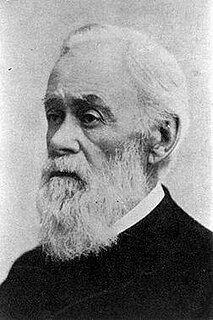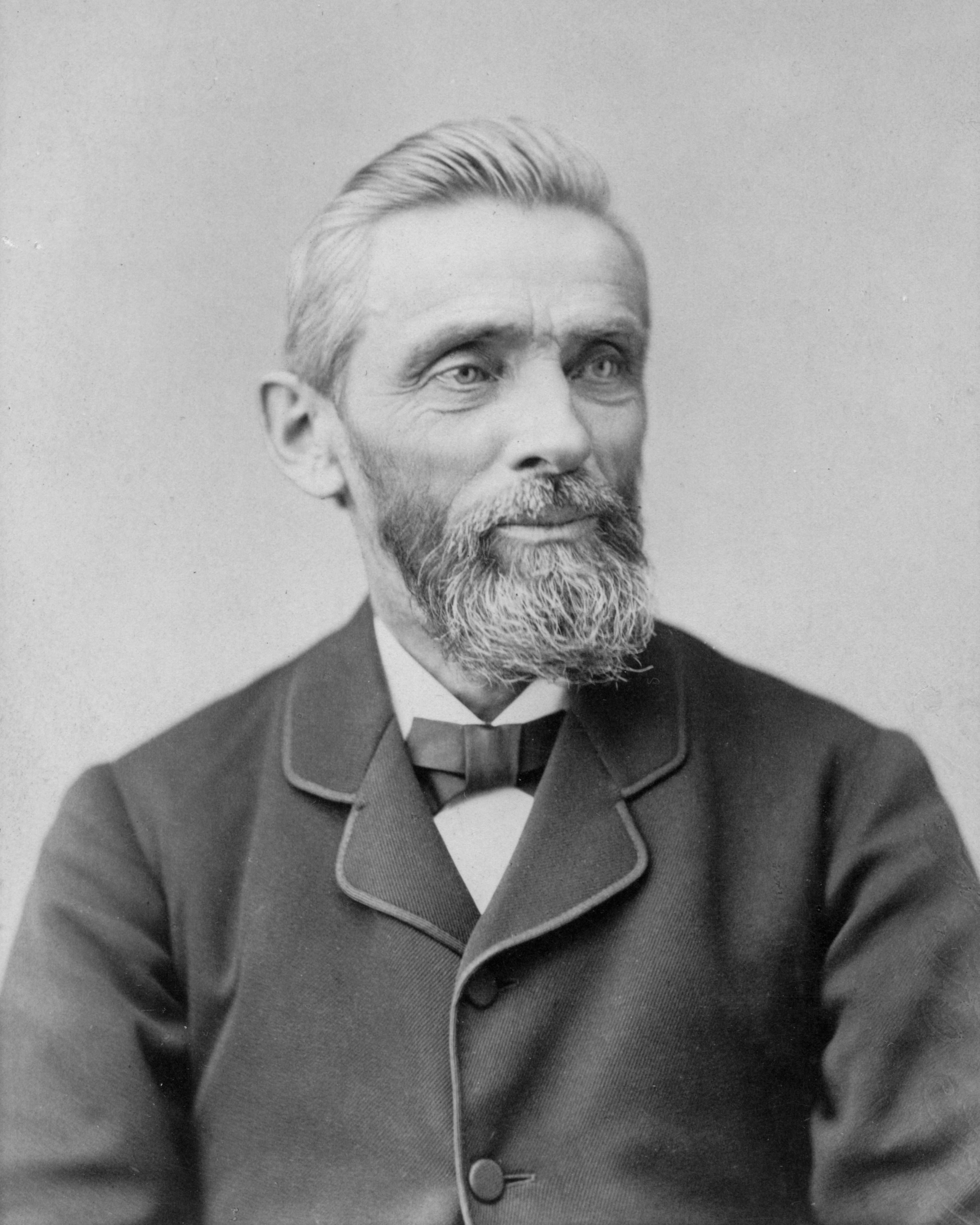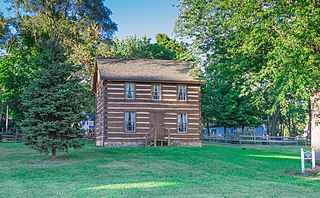
Adventism is a branch of Protestant Christianity that believes in the imminent Second Coming of Jesus Christ. It originated in the 1830s in the United States during the Second Great Awakening when Baptist preacher William Miller first publicly shared his belief that the Second Coming would occur at some point between 1843 and 1844. His followers became known as Millerites. After the Great Disappointment, the Millerite movement split up and was continued by a number of groups that held different doctrines from one another. These groups, stemming from a common Millerite ancestor, became known collectively as the Adventist movement.

The Millerites were the followers of the teachings of William Miller, who in 1831 first shared publicly his belief that the Second Advent of Jesus Christ would occur in roughly the year 1843–1844. Coming during the Second Great Awakening, his beliefs were taken as predictions, spread widely, and were believed by many, leading to the Great Disappointment.

The Great Disappointment in the Millerite movement was the reaction that followed Baptist preacher William Miller's proclamations that Jesus Christ would return to the Earth by 1844, what he called the Advent. His study of the Daniel 8 prophecy during the Second Great Awakening led him to the conclusion that Daniel's "cleansing of the sanctuary" was cleansing of the world from sin when Christ would come, and he and many others prepared, but October 22, 1844, came and they were disappointed.

William Miller was an American Baptist preacher who is credited with beginning the mid-19th-century North American religious movement known as Millerism. After his proclamation of the Second Coming did not occur as expected in the 1840s, new heirs of his message emerged, including the Advent Christians (1860), the Seventh-day Adventists (1863) and other Adventist movements.

James Springer White, also known as Elder White, was a co-founder of the Seventh-day Adventist Church and husband of Ellen G. White. In 1849 he started the first Sabbatarian Adventist periodical entitled "The Present Truth", in 1855 he relocated the fledgling center of the movement to Battle Creek, Michigan, and in 1863 played a pivotal role in the formal organization of the denomination. He later played a major role in the development of the Adventist educational structure beginning in 1874 with the formation of Battle Creek College.

The Seventh-day Adventist Church had its roots in the Millerite movement of the 1830s to the 1840s, during the period of the Second Great Awakening, and was officially founded in 1863. Prominent figures in the early church included Hiram Edson, James Springer White, Joseph Bates, and J. N. Andrews. Over the ensuing decades the church expanded from its original base in New England to become an international organization. Significant developments such the reviews initiated by evangelicals Donald Barnhouse and Walter Martin, in the 20th century led to its recognition as a Christian denomination.

Joshua Vaughan Himes (1805–1895) was a Christian leader and publisher. He became involved with the followers of William Miller and later became a prominent leader in the Advent Christian Church.

The investigative judgment is a unique Seventh-day Adventist doctrine, which asserts that the divine judgment of professed Christians has been in progress since 1844. It is intimately related to the history of the Seventh-day Adventist Church and was described by the church's pioneer Ellen G. White as one of the pillars of Adventist belief. It is a major component of the broader Adventist understanding of the "heavenly sanctuary", and the two are sometimes spoken of interchangeably.

John Norton Loughborough was an early Seventh-day Adventist minister.

James Rosco Nix has been director of the Ellen G. White Estate since 2000. As a young person he developed a collection of rare early Seventh-day Adventist materials and interviewed individuals who remembered Ellen G. White. Nix is recognized as a consummate storyteller of early Adventism.

Adventist Heritage Ministry (AHM) began on May 8, 1981, as Adventist Historic Properties, Inc., by several Adventist laypeople to help preserve Seventh-day Adventist historic sites. Shortly after its founding the organization adopted the motto, "The Past With a Future."

Hiram Edson (1806–1882) was a pioneer of the Seventh-day Adventist Church, known for introducing the sanctuary doctrine to the church. Hiram Edson was a Millerite adventist, and became a Sabbath-keeping Adventist. Like all Millerites, Edson expected that the Second Coming of Jesus Christ would occur on October 22, 1844. This belief was based on an interpretation of the 2300 day prophecy which predicted that "the sanctuary would be cleansed" which Millerites took to mean that Christ would return on that day.

The Hudson River Historic District, also known as Hudson River Heritage Historic District, is the largest such district on the mainland of the contiguous United States. It covers an area of 22,205 acres extending inland roughly a mile (1.6 km) from the east bank of the Hudson River between Staatsburg and Germantown in Dutchess and Columbia counties in the U.S. state of New York. This area includes the riverfront sections of the towns of Clermont, Red Hook, Rhinebeck and part of Hyde Park. This strip includes in their entirety the hamlets of Annandale, Barrytown, Rhinecliff and the village of Tivoli. Bard College and two protected areas, Margaret Lewis Norrie State Park and Tivoli Bays Unique Area, are also within the district.

Union Springs Academy is a private, co-ed Seventh-day Adventist prep school. It is a part of the Seventh-day Adventist education system, the world's second largest Christian school system. At USA the acceptance rate is about 95 percent, leaving the population of the student body to about seventy students. Over sixty percent of the school is involved in music, arts, and sports. The graduation rate at Union Springs Academy is 90 percent. Students from Union Springs Academy have been known to go to Universities around the United States and the world. The teacher to student ratio is about 4:1, so every student is helped equally and fairly. The academy was started in 1921 when the Seventh-day Adventist church purchased the buildings and land from the Seminary of Friends.

The John W. Keeney and Erena Alexander Rogers Farm, commonly known simply as the Keeney Farm, is a historic district located at 5300 Monroe Street (M-50) in Franklin Township in north-central Lenawee County, Michigan. It was designated as a Michigan Historic Site and added to the National Register of Historic Places on September 24, 2001. The apple orchard has been continuously operating since 1875, and is one of the oldest such orchards in Lenawee County.

The Seventh-day Adventist Church pioneers were members of Seventh-day Adventist Church, part of the group of Millerites, who came together after the Great Disappointment across the United States and formed the Seventh-day Adventist Church. In 1860, the pioneers of the fledgling movement settled on the name, Seventh-day Adventist, representative of the church's distinguishing beliefs. Three years later, on May 21, 1863, the General Conference of Seventh-day Adventists was formed and the movement became an official organization.

Sugar Loaf Farm is an early 19th-century cluster of agricultural, industrial, and residential buildings located in a bucolic setting approximately 7.5 miles southwest of Staunton, Virginia and 1/2 mile southeast of Sugar Loaf Mountain. As a member of the U.S. National Register of Historic Places, Sugar Loaf Farm maintains the only surviving brick grist mill in Augusta County, Virginia. The brick grist mill on the property combines the mechanical principles of Oliver Evans, a prominent mill designer of the late eighteenth century, with the engineering craftsmanship and building detail of molded brick cornices, a vernacular architecture in the upper Shenandoah Valley in the early 1800s. The Farm's three original buildings, the farmhouse, grist mill and miller's house, were all constructed by David Summer at a time when Augusta County had emerged as the center of one of the most dominant wheat-growing and flour-processing regions in the South. Sugar Loaf Farm serves as a valuable reminder of the wheat-based agriculture that persisted in this region well into the twentieth century. Today, Sugar Loaf Farm is a privately run farm that specializes in raising Black Angus cattle.

Crown Heights North Historic District is a national historic district located in the Crown Heights neighborhood of Brooklyn, Kings County, New York. The district encompasses 1,019 contributing buildings in a predominantly residential section of Brooklyn. The district features noteworthy examples of Greek Revival, Gothic Revival, Italianate, Second Empire, Queen Anne, Romanesque Revival, Renaissance Revival, Beaux-Arts, and Colonial Revival style architecture. It largely developed between about 1853 and 1942, and consists of densely constructed rowhouses, townhouses, two-family houses, semi-attached houses, freestanding houses, flats, apartment buildings, and institutional and commercial buildings. Notable buildings include the former Union League Club Building, Union United Methodist Church (1889-1891), Brooklyn Methodist Episcopal Church Home, Bedford Central Presbyterian Church, Hebron French Speaking Seventh Day Adventist Church (1909), St. Gregory the Great Roman Catholic Church (1915-1916), and the former Kings County Savings Bank (1929-1930).

The Advent Historic District is a residential historic district, roughly bounded by North Washington Avenue, Champion Street, Hubbard Street, and Greenwood Avenue, in Battle Creek, Michigan. The district encompasses the heart of the former village of Washington Heights, which was developed as a by-product of the growth of the Seventh-day Adventist Church in the area during the last half of the nineteenth and the early part of the twentieth. The area was annexed into Battle Creek in 1926. It was listed on the National Register of Historic Places in 1994.




















